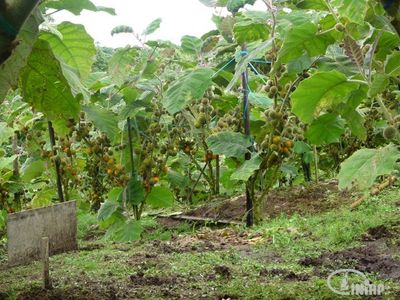Problems with Naranjilla
Naranjilla is a fun subtropical shrub to grow that provides interesting foliage as well as tasty orange fruit. In warm climates, grow outdoors year-round, and in colder regions, either enjoy naranjilla as an annual or in a container; just watch out for its spines indoors. Naranjilla is fairly easy to grow if you give it the right conditions. When conditions are not the best, you may run into some issues. Naranjilla will not tolerate frost, and while it can make it through a drought, it does best when watered regularly. It also suffers more than other plants when there is standing water. Your naranjilla will be healthiest when temperatures are between 62 and 85 degrees F. (17-29 C.) and with high humidity. Soil should drain well and it will need watering only when the top layer has gone dry.
Problems Growing Naranjilla – Pests and Diseases
With good growing conditions, you can minimize the risk of these problems but they can still occur:
Root knot nematode. One of the biggest naranjilla pest issues is this soil nematode. The microscopic worm attacks the roots, and the best way to avoid root knot nematodes is to get plants with resistant rootstock. Signs of this infection include yellowing, stunted growth, and poorly formed fruits.
Root rot. Naranjilla diseases that are most common are related to moisture at the roots. Root rot and other fungal infections cause stunted growth, wilted and discolored leaves, and eventually die back. The roots will be soft and brown.
Insects. Insects that may feed on or damage naranjilla include whiteflies, flea beetles, and weevils.
With the right growing conditions, you can count on naranjilla to thrive with minimal care, but there are potential problems. Nematodes are the biggest concern, but if you have resistant plants or take measures to treat your soil to eliminate these microscopic worms, you should be able to grow naranjilla relatively problem free.
